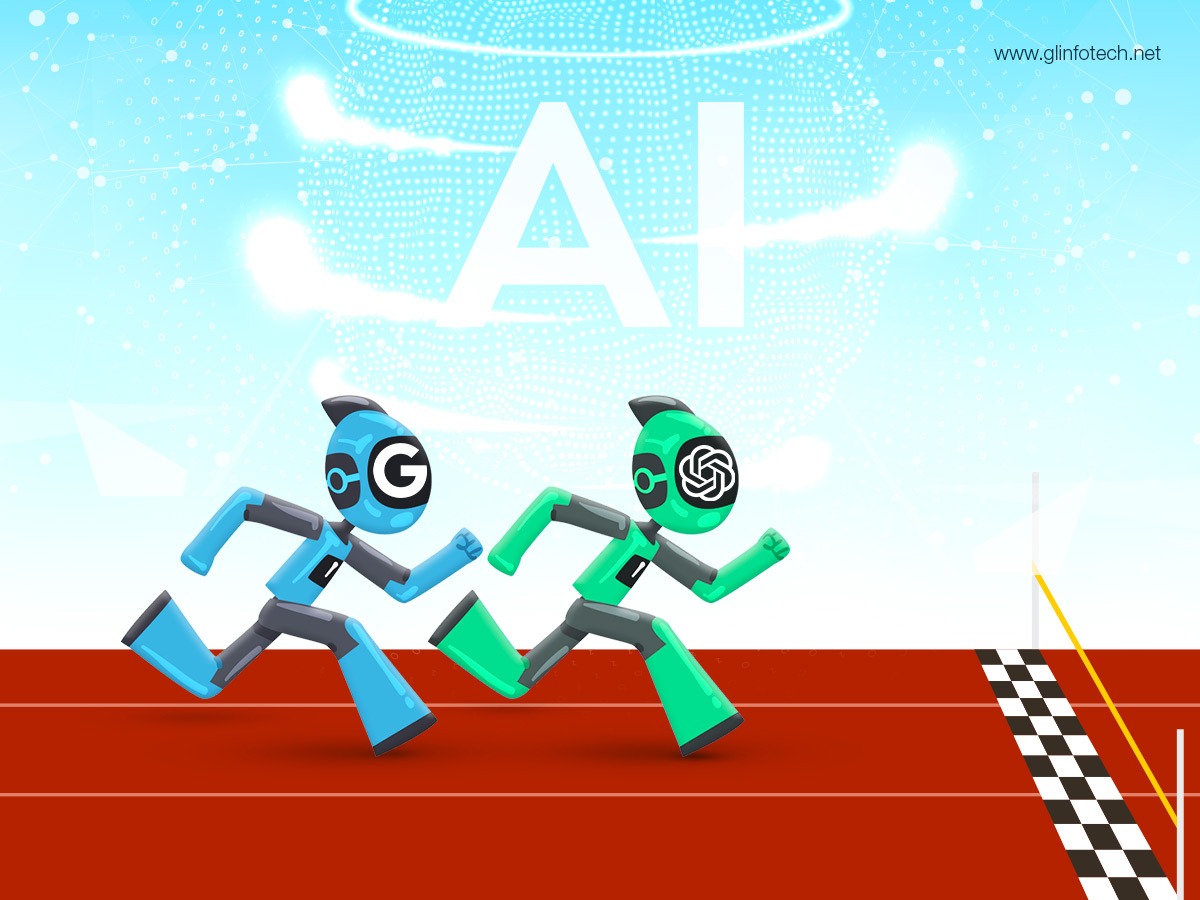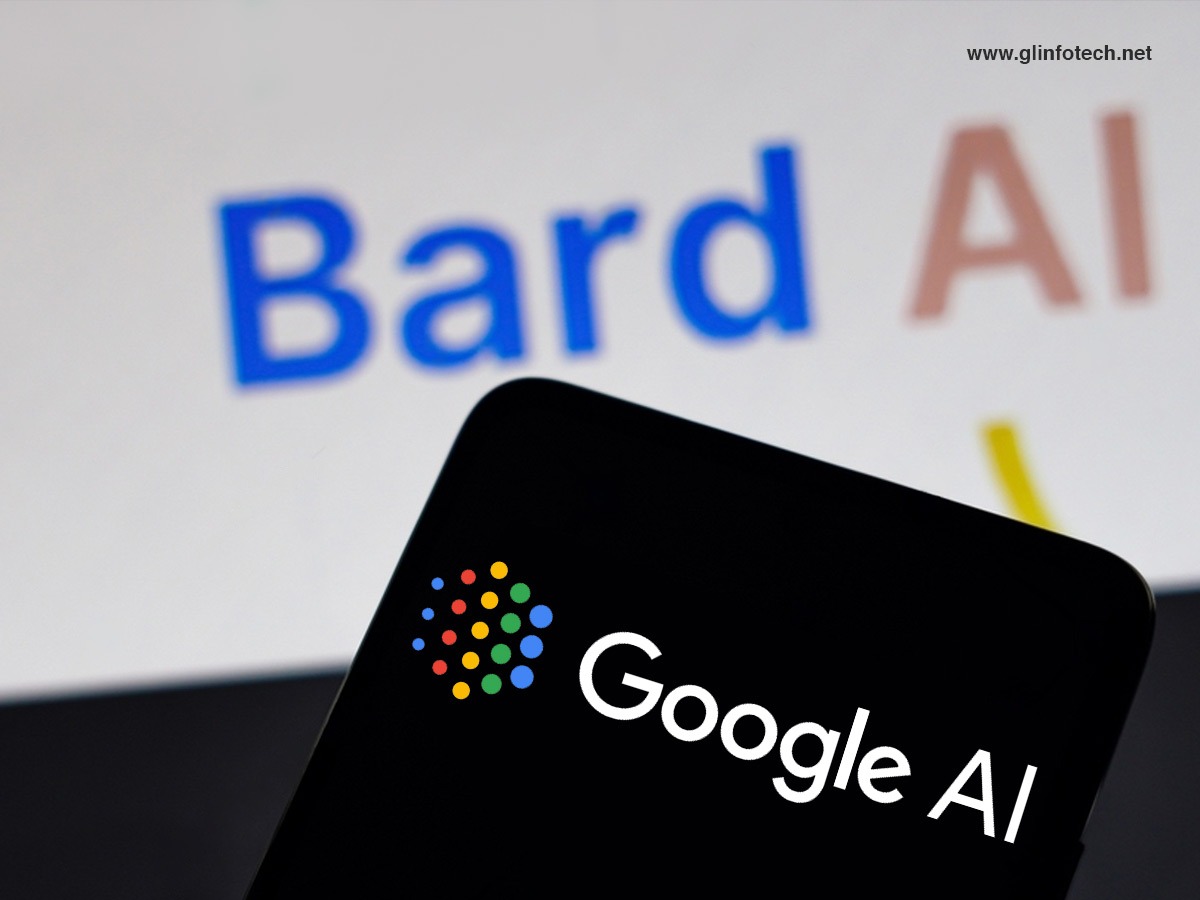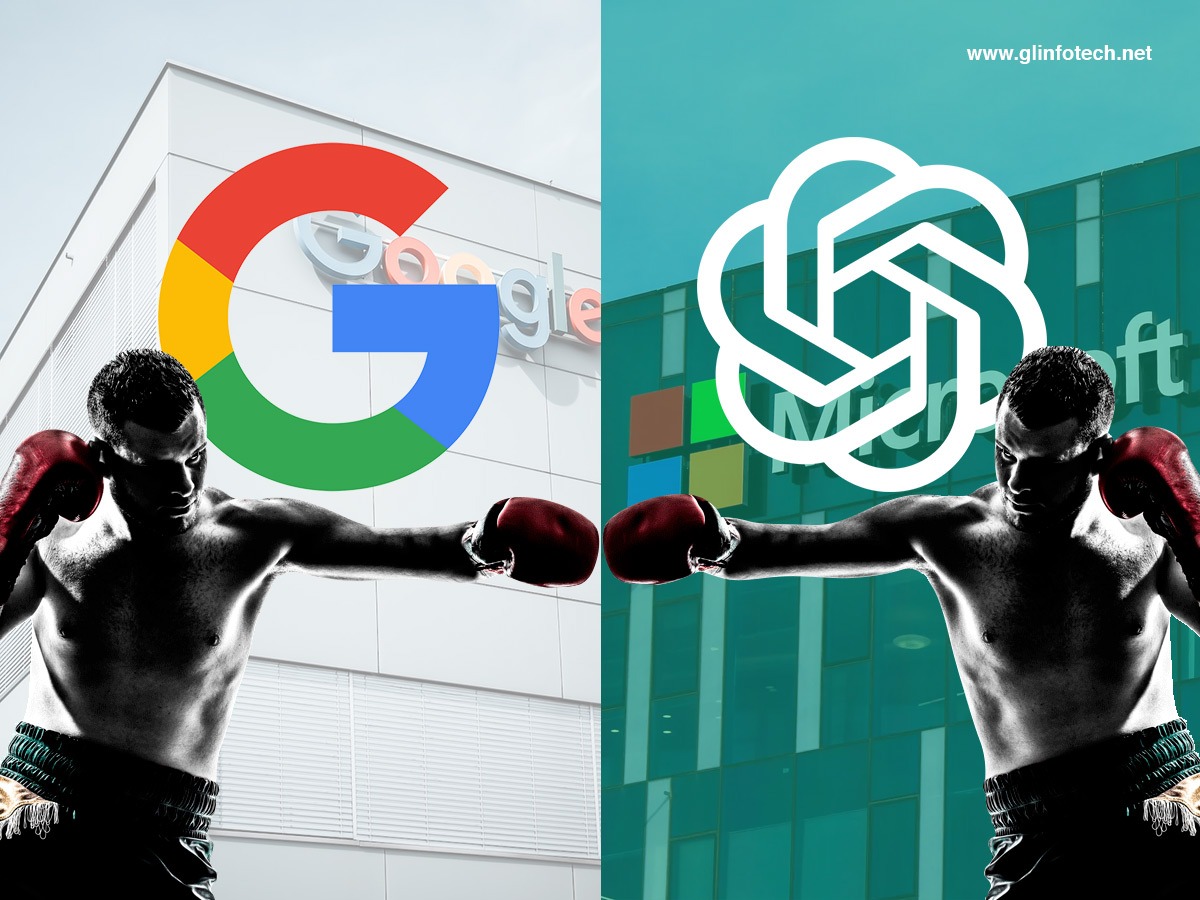
In the ever-evolving technological landscape, artificial intelligence is being used to increase efficiency and accuracy in a variety of tasks. Google’s Bard AI is one such example that has the potential to revolutionize how we communicate and do business. Do you know the fascinating facts about Google AI? Just imagine when Google AI’s top-tier intervention Google bard chatbot competes with Microsoft ChatGPT. Google’s “bard” is going to span over time, and a new artificial intelligence chatbot of Google is getting ready for a great way back according to the hope of Google CEO Sundar Pichai.
In fact, Google Bard is the most delinquent tool of Google AI that can augment the way we do business nowadays. For one thing Google AI’s invention Google Bard is comparable with ChatGPT. Although, language processing and visual image-generative AI chatbots like Dall-e2 are attaining popularity swiftly.
How does Google’s bard AI become a formidable rival by backing Microsoft ChatGPT?
Relying on the fact that ChatGPT is a powerful variant of GPT, abbreviated as Generative Pre-training Transformer which is developed for easier human-like conversational language generation by the influence of Google AI whereas Google Bard is the most advanced Google AI which responds to the huge success of par backed with Microsoft ChatGPT. Whenever a user gives input, Chatbots tries to respond as a human does and that is the human-oriented conversation most clients desire.
Since its launch in 2004, Google’s web search engine has become an integral part of daily life for millions of people. With its world-class artificial intelligence, it continues to revolutionize technology and the way we communicate with each other. In fact, Google’s chatbots have become one of the most popular features of its messenger service, Gmail. Additionally, BING is one of the world’s most successful artificial intelligence.
Introduction of Bard
Google Bard is going to make a blow after being tested by a group of trusted testers. This is the latest announcement. As per that, we can imagine the bard’s influence, which might be going into effect. Google claims that it would be a language that can be understood even by children which can help to organize services and other kinds of mundane tasks by providing tips or ideas for planning food or trips.

Google’s Bard is a web search engine designed to help users find information more quickly. Bard will cover a broad range of topics, including news, weather, sports, entertainment, and more. Bard will be fast, with a search time of just a few seconds. It will provide helpful suggestions to help you find the information you’re looking for. Bard will be available in every language.
Google’s bard AI is a type of AI that is designed to understand natural language. It uses deep learning and natural language processing (NLP) to understand and respond to spoken and written language. With bard AI, computers can understand the meaning and context of written and spoken language, allowing them to respond in a meaningful way.
The most impressive aspect of bard AI will be its ability to learn from its mistakes. By using a technique called “reinforcement learning”, bard AI can identify and correct its mistakes, making it more accurate and efficient over time. This means that bard AI can learn from its mistakes and become more accurate and reliable at understanding and responding to natural language.
Google’s bard AI is also capable of recognizing and generating images. This means that computers can understand the meaning behind images, allowing them to respond in a meaningful way. Finally, bard AI will be configured to understand and generate music.
In effect, Bard is also a language-processing artificial intelligence that would be an extension of Microsoft ChatGPT.

Features of Google Bard
- Bard is powered by LaMDA, which is a Language Model for Dialogue Applications.
- Bard comprises power, intelligence and creativity
- Provide fresh and high-quality responses
- Capable of generating curiosity.
- Explained the query about “how to explain new discoveries made by NASA’s James Webb Space Telescope to a 9-year-old, or learn more about the best strikers in football right now.”
How did Google AI benefit Bard?
In light of this new technology, businesses need to think about how they are doing their work, what products and services they offer, and how AIs like Bard and ChatGPT could enrich better customer experiences with the betterment of workflow.
Let’s go for a ride to explore the implications of Google AI.
● Compiling research
● Drafting marketing content
● Brainstorming ideas
● Writing computer code
● Automating parts of the sales process
● Delivering aftercare services when customers buy products
● Providing customized instructions
● Streamlining and enhancing processes using automation
● Translating the text from one language to another
● Smoothing out the customer onboarding process
● Increase customer engagement thereby leading to improved loyalty and retention
Future of ChatGPT
Before featuring in the future of ChatGPT, we have to gather an idea about the difference and after all, you can able to think it off. In the same context in which personality is developed based on the surroundings where you have born and brought up and mingling persons, the main difference between Google Bard and ChatGPT relies upon the training on sources of disparate data they have attained and where they have garnered. Chatbots that are trained in a well-mannered system can deliver accurate results. According to the current news updates, Google is trying to generate more actionable conversational AI features by strategizing the search modules by enhancing all the related sources. So, Google seems that in terms of computational power and potential use, both Google Bard and ChatGPT show slight differences.
Earlier, while ChatGPT has been revolutionized and trained on all of the information pinnacles in the world itself, conversely Google Bard synthesizes the captures the billions of bytes of data that illustrate the different perspectives. Meanwhile, Bard will be careful to give real-time and precise information in an easily digestible conversational mode. The release of ChatGPT has triggered a global AI arms chase, wherein tech leaders have been hurrying their AI research to expand tools like ChatGPT which will naturally replace authenticity later on. Numerous alternatives to ChatGPT are only in their nascent stages or have biases, and build mixed outcomes at their finest. The end goal of growing conversational AI products for example ChatGPT and Google Bard is to optimize the generation of the greatest handy details that are at similar time actionable too.
It’s important to understand what could happen if these technologies take over; otherwise, you may find yourself struggling to keep up with changes in the industry.
Let’s see in the next few months how Bard will play a role against ChatGPT in producing optimized and customized results for all kinds of user queries.
Web Design & Development Ecommerce Web Development ERP Software Development
